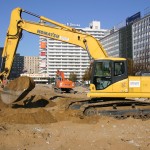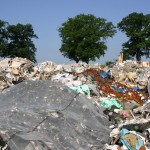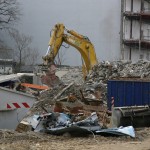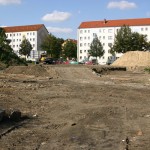During development of a site soil is frequently excavated e.g. during groundworks, laying of the building foundation, construction of a basement or underground garage. In urban areas, this soil material is often interspersed with other material such as building rubble, slag, ash and the like, that may require professional disposal as contaminated soil or building rubble.
Sampling and analysis is required to classify materials for disposal and determine whether they are able to be recycled or will require disposal as hazardous waste. As a number of different materials are often present within the soil material, numerous discrete subsamples are collected and combined to form composite samples (as per requirements of “LAGA PN 98” (Ad hoc Working Group of the Federal States on Waste, 2001). Depending on the sample quality (topsoil, subsoil, dredged material, building rubble, other waste materials), various chemical parameters will be analysed according to the requirements of LAGA (Ad hoc Working Group of the Federal States on Waste, 2003, 2004). Depending on the contaminant concentration the soil is classified into Z0, Z1, Z2 or >Z2 material according to LAGA limit values. Type and contaminant concentratrions determine the disposal code.
What can we provide?
- Representative sampling and sampling strategy according to LAGA PN 98
- Laboratory sample analysis of the relevant parameters
- Determination of possible recycling or required waste disposal according to the Z- limit values of LAGA (Ad hoc Working Group of the Federal States on Waste)
- Assessment of whether soil material meets the requirements of § 12 BBodSchV for a suitable rooting zone
- Allocation of the disposal code
- Determination of the waste volume
- Calculation of waste disposal costs
Soil can only be correctly categorized and disposed of, if classified according to the LAGA limit values and the correct disposal code.







